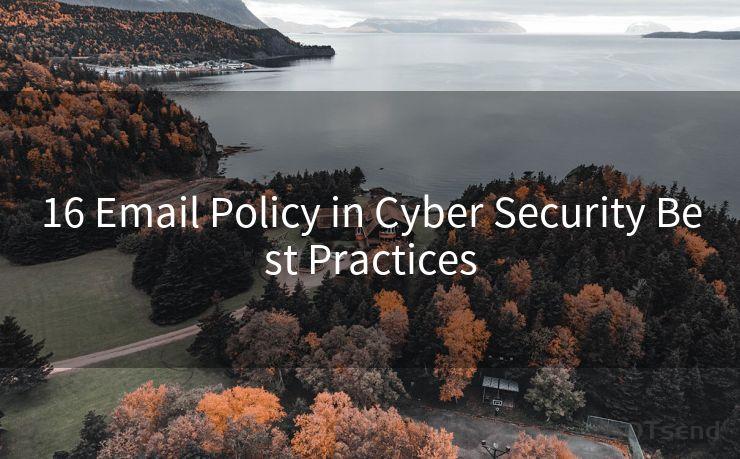16 Email Policy in Cyber Security Best Practices




1. Introduction
In the digital age, emails have become a vital communication tool for businesses and individuals alike. However, this convenience also brings security risks, making it crucial to adopt cyber security best practices. In this article, we explore the 16 email policies that are essential for maintaining a robust cyber security posture.
2. Secure Email Gateways
Implementing a secure email gateway is the first line of defense against malicious emails. These gateways scan incoming and outgoing emails for threats, blocking potentially harmful content before it reaches users' inboxes.
3. Multi-Factor Authentication
Strengthening account security with multi-factor authentication (MFA) is a must. MFA requires additional verification steps beyond just a password, such as a fingerprint or a one-time password, significantly reducing the risk of unauthorized access.
4. Encryption Protocols
Emails containing sensitive information should always be encrypted. Encryption protocols like S/MIME and PGP ensure that even if an email is intercepted, the content remains inaccessible to unauthorized parties.
5. Regular Training for Employees
Regular cyber security training for employees is essential. Teaching them how to identify phishing emails, manage attachments safely, and understand the importance of strong passwords can significantly reduce the risk of a security breach.
6. Strong Password Policies
Implementing a strong password policy is crucial. Passwords should be complex, unique, and regularly updated to minimize the risk of brute-force attacks or password theft.

7. Avoiding Unsolicited Emails
Employees should be trained to avoid opening unsolicited emails, especially those with attachments or links, as they may contain malware or phishing attempts.
8. Secure Attachment Handling
Attachments should be scanned for viruses before opening, and it's best to use trusted anti-virus software for this purpose.
9. Email Retention Policies
Having a clear email retention policy helps manage storage efficiently and reduces the risk of sensitive data being left unattended for too long.
10. Regular Auditing
Regular auditing of email accounts and permissions ensures that only authorized users have access to sensitive information.
11. Secure Deletion of Emails
When deleting emails, it's important to ensure they are securely deleted and cannot be recovered, preventing any potential data leaks.
12. Use of Secure Protocols
Always use secure protocols like HTTPS and IMAP over SSL for email access and transmission.
13. Limiting External Email Forwarding
Restricting the ability to forward emails to external addresses can help prevent sensitive data leaks.
🔔🔔🔔
【AOTsend Email API】:AOTsend is a Managed Email Service for sending transactional emails. Support Email Types: reminders, authentication, confirmations, notifications, verification codes, invoices, password resets, account activations, billing statements, two-factor authentication (2FA), and one-time passwords (OTP) emails, etc. $0.28 per 1000 Emails. 99% Delivery, 98% Inbox Rate.
You might be interested in:
Why did we start the AOTsend project, Brand Story?
What is a Managed Email API, How it Works?
Best 25+ Email Marketing Platforms (Authority,Keywords&Traffic Comparison)
Best 24+ Email Marketing Service (Price, Pros&Cons Comparison)
Email APIs vs SMTP: How they Works, Any Difference?
14. Monitoring Suspicious Activity
Regular monitoring of email traffic for suspicious activity, such as unusual login attempts or large volumes of outgoing emails, can help detect and prevent breaches early.
15. Backup and Recovery Plan
Having a robust backup and recovery plan for email data is essential in case of any unexpected events like hardware failures or security breaches.
16. Incident Response Plan
Lastly, having a clear incident response plan in place that outlines the steps to be taken in case of a security incident involving email is crucial. This plan should include procedures for identifying, containing, and responding to threats.
By following these 16 email policies in cyber security best practices, organizations can significantly enhance their email security posture and reduce the risk of data breaches and other security incidents. Remember, emails are often the gateway to sensitive information, and it's crucial to protect them with robust security measures.




Scan the QR code to access on your mobile device.
Copyright notice: This article is published by AotSend. Reproduction requires attribution.
Article Link:https://www.mailwot.com/p7207.html



